Seedless cucumbers, also known as European cucumbers, are a specific type of cucumber that offers numerous health benefits and can be a refreshing addition to your diet. They are not only hydrating and low in calories, but they also provide essential nutrients like vitamins K and C, as well as antioxidants that help fight free radicals.
If you’re looking to boost your weight loss efforts, improve hydration, promote regular bowel movements, or even lower blood sugar levels, incorporating seedless cucumbers into your meals and snacks can be a great option.
Key Takeaways:
- Seedless cucumbers have a milder taste and fewer seeds compared to traditional cucumbers.
- They are hydrating, low in calories, and rich in essential nutrients like vitamins K and C.
- Incorporating seedless cucumbers into your diet can support weight loss, improve hydration, promote regular bowel movements, and potentially lower blood sugar levels.
- Seedless cucumbers are versatile and can be enjoyed sliced in salads, used as a topping for sandwiches, or incorporated into various recipes.
- When buying seedless cucumbers, look for firm cucumbers with smooth skin.
Seedless Cucumber Nutrition and Health Benefits
Seedless cucumbers are not only a delicious addition to your meals, but they also offer numerous health benefits. Let’s take a closer look at the nutrition profile and the ways in which seedless cucumbers can support your overall well-being.
Nutrition Facts
One medium unpeeled seedless cucumber provides approximately:
| Nutrient | Amount | % Daily Value (DV) |
|---|---|---|
| Calories | 30 | |
| Carbohydrates | 6 grams | |
| Protein | 3 grams | |
| Fiber | 2 grams | |
| Vitamin C | 10% DV | |
| Vitamin K | 57% DV | |
| Magnesium | ||
| Potassium | ||
| Manganese |
Seedless cucumbers are packed with essential vitamins and minerals. They are particularly rich in vitamin C, which supports immune function, and vitamin K, which plays a role in blood clotting and bone health. Additionally, they contain beneficial minerals like magnesium, potassium, and manganese, which contribute to various bodily functions.
Antioxidant Power
One standout feature of seedless cucumbers is their antioxidant content. These antioxidants, such as beta carotene, flavonoids, and lignans, play a crucial role in neutralizing harmful free radicals in the body. By doing so, antioxidants help reduce the risk of chronic diseases, including heart disease and certain types of cancer.
No Seeds, No Worries
One advantage of seedless cucumbers is that they are, as the name suggests, seedless. This makes them an ideal choice for individuals who prefer a milder taste or struggle with digesting cucumber seeds. The absence of seeds in seedless cucumbers allows you to enjoy their crisp texture without any unwanted bitterness or difficulties.
So go ahead and indulge in seedless cucumbers knowing that they not only taste great but also provide a range of health benefits. Whether you enjoy them in salads, sandwiches, or as a refreshing snack, seedless cucumbers are a fantastic addition to a well-rounded, nutritious diet.
How to Grow Seedless Cucumbers
Growing seedless cucumbers requires understanding the specific needs of this cucumber variety. Start by selecting a suitable seedless cucumber variety, such as “Mini Munch” or “Tasty Green.” These varieties are specifically bred to produce seedless cucumbers.
When planting seedless cucumbers, ensure they receive full sun exposure and provide them with well-drained soil. Cucumbers thrive in warm temperatures, so it’s best to start seeds indoors and transplant them to the garden or use seedlings purchased from a nursery.
Regular watering and fertilization will promote healthy growth, and trellising the cucumber vines can help maximize space and prevent the fruit from touching the ground. It’s important to note that while seedless cucumbers do not produce mature seeds, they may still contain undeveloped or immature seeds, which are generally small and less noticeable compared to traditional cucumber seeds.
| Steps | Description |
|---|---|
| Select a seedless cucumber variety | Choose varieties specifically bred for seedless cucumbers such as “Mini Munch” or “Tasty Green”. |
| Provide full sun exposure | Ensure your seedless cucumbers receive at least 6-8 hours of direct sunlight per day. |
| Plant in well-drained soil | Prepare the soil with good drainage to prevent waterlogged conditions. |
| Start seeds indoors or use seedlings | Begin growing seedless cucumbers indoors and transplant them to the garden or purchase seedlings from a nursery. |
| Water regularly | Keep the soil consistently moist, avoid overwatering or allowing it to dry out. |
| Fertilize appropriately | Apply a balanced fertilizer following the instructions on the packaging to promote healthy growth. |
| Trellis the cucumber vines | Use a trellis or support system to train the cucumber vines upwards and prevent the fruit from touching the ground. |
Difference Between Seedless and Seeded Cucumbers
When it comes to cucumbers, there are key differences between seedless and seeded varieties that influence their taste, texture, and overall appeal. Understanding these differences can help you make informed choices when selecting cucumbers for your recipes. Let’s explore the dissimilarities between seedless and seeded cucumbers.
Seed Development
Seedless cucumbers are specially bred to produce fruits without mature seeds. While they may contain small, underdeveloped seeds, these are significantly less noticeable compared to traditional cucumber seeds. On the other hand, seeded cucumbers, such as slicing or pickling cucumbers, produce fully developed, larger seeds that can have a more prominent presence in the fruit.
Taste and Texture
The absence of mature seeds in seedless cucumbers contributes to their milder and less bitter taste. These cucumbers tend to have a refreshing and subtle flavor that pairs well with a variety of dishes. Seeded cucumbers, on the other hand, may have a slightly stronger flavor, enriched by the presence of mature seeds. The taste and texture of seeded cucumbers can vary depending on the variety and ripeness of the fruit.
Seedless cucumbers offer a more delicate and less seedy eating experience, making them a preferred choice for those who enjoy a mild cucumber flavor.
While both seedless and seeded cucumbers provide excellent nutritional benefits, the difference in seed content can impact the overall taste profile of the cucumbers and influence their use in different culinary applications.
Culinary Applications
The unique characteristics of seedless and seeded cucumbers make them suitable for different culinary uses. Seedless cucumbers, with their mild flavor and less noticeable seeds, are often favored for fresh consumption, in salads, sandwiches, or as a crisp and hydrating snack. Seeded cucumbers, with their slightly stronger taste and more pronounced seeds, are commonly used for pickling due to their texture and flavor retention during the pickling process.
When choosing between seedless and seeded cucumbers for your recipes, consider your desired taste profile, texture preference, and specific culinary application. Both options offer their own distinct qualities, providing flexibility and versatility in the kitchen.
Seedless Cucumber Recipes
Looking for creative ways to incorporate seedless cucumbers into your meals? Here are some refreshing and delicious recipes to try:
1. Greek Cucumber Salad
This vibrant salad combines seedless cucumber, cherry tomatoes, red onion, Kalamata olives, feta cheese, and a tangy lemon-herb dressing. Toss everything together for a Greek-inspired dish that is light, crisp, and bursting with flavor.
2. Cucumber Sushi Rolls
If you’re a fan of sushi, why not try making your own cucumber sushi rolls? Replace the traditional seaweed wrap with thinly sliced seedless cucumber. Fill it with your favorite sushi ingredients like avocado, crab stick, carrot, and cucumber. Roll it up, slice, and enjoy a refreshing and healthy sushi alternative.
3. Creamy Cucumber Soup
Beat the heat with this cool and creamy cucumber soup. Blend seedless cucumbers with Greek yogurt, garlic, lemon juice, and fresh herbs like dill or mint. Chill it in the refrigerator, and you’ll have a refreshing soup that’s perfect for hot summer days.
4. Cucumber Watermelon Salad
This refreshing salad combines the crispness of seedless cucumbers with the sweetness of watermelon. Toss them together with mint, feta cheese, and a citrus dressing for a light and refreshing salad that’s ideal for picnics or as a side dish with grilled meats.
5. Cucumber and Avocado Salsa
Upgrade your salsa game by adding seedless cucumbers and creamy avocado to the mix. Dice cucumbers, avocado, red onion, jalapeno, and cilantro, and combine them with lime juice and a pinch of salt. Serve it with tortilla chips or as a topping for grilled fish or chicken.
6. Cucumber and Smoked Salmon Roll-Ups
For an elegant and appetizing appetizer, roll slices of seedless cucumber around smoked salmon and a creamy dill cheese spread. Secure them with toothpicks, and you’ll have a tasty and eye-catching dish that’s perfect for parties or gatherings.
7. Cucumber Mint Lemonade
Quench your thirst with a refreshing cucumber mint lemonade. Blend seedless cucumbers, fresh mint leaves, lemon juice, and a touch of honey for sweetness. Strain the mixture, dilute with water, and serve over ice for a revitalizing and hydrating beverage.
These are just a few ideas to get you started. Feel free to experiment and incorporate seedless cucumbers into your favorite recipes or create new ones. The mild flavor and refreshing crunch of seedless cucumbers make them a versatile ingredient that can elevate any dish.
Tips for Buying Seedless Cucumbers
When it comes to purchasing seedless cucumbers, there are a few key factors to consider to ensure you get the best quality produce. Here are some important tips to keep in mind:
- Appearance: Choose seedless cucumbers that are vibrant green in color and have a smooth, unwrinkled skin. Avoid cucumbers with yellow spots or soft areas as they may indicate overripeness or spoilage.
- Firmness: Gently squeeze the cucumber to assess its firmness. It should feel firm but not overly hard. Avoid cucumbers that are mushy or have a soft texture.
- Size: Seedless cucumbers are typically longer and slimmer compared to traditional cucumbers. Look for cucumbers that are about 8 to 10 inches in length for optimal taste and texture.
- Weight: A good-quality seedless cucumber should feel heavy for its size. Heavier cucumbers are likely to be more juicy and have a higher water content.
- Smell: Give the cucumber a gentle sniff. It should have a fresh and mild aroma. Avoid cucumbers with a strong or unpleasant smell.
- Packaging: Check the packaging or labels to ensure the cucumbers have been stored properly. Look for cucumbers that are stored in a cool environment, as exposure to heat can affect their quality.
By following these tips, you can confidently select seedless cucumbers that are flavorful, crisp, and of the highest quality.
My Top Recommendations for Seedless Cucumber Selection:
| Brand | Description | Price |
|---|---|---|
| FreshFarm | Premium seedless cucumbers, grown using sustainable practices | $2.99 per pound |
| OrganicCrunch | Certified organic seedless cucumbers, free from synthetic pesticides | $3.49 per pound |
| LocalGrown | Locally sourced seedless cucumbers, supporting small-scale farmers | $2.79 per pound |
These brands consistently provide high-quality seedless cucumbers that are sure to enhance your meals and snacks.
How to Store Seedless Cucumbers
Proper storage is key to maximizing the shelf life and maintaining the freshness of seedless cucumbers. Follow these simple tips to ensure your cucumbers stay crisp and delicious:
- Leave them unwashed: Store seedless cucumbers in their original unwashed state to maintain their natural protective coating.
- Keep them cool: Store seedless cucumbers in the refrigerator at a temperature between 40-45°F (4-7°C). This will help slow down the natural ripening process and maintain their crispness.
- Use a perforated bag or container: Place seedless cucumbers in a breathable bag, such as a perforated plastic bag or a container with air vents. This allows for better air circulation and helps prevent moisture buildup, which can lead to spoilage.
- Avoid storing near ethylene-producing fruits: Keep seedless cucumbers away from ethylene-producing fruits, such as bananas, apples, and melons. Ethylene gas can speed up the ripening process and cause cucumbers to spoil faster.
- Consume within a week: Aim to use seedless cucumbers within a week of purchase for optimal freshness and flavor.
By following these storage tips, you can enjoy the crispness of seedless cucumbers for longer and minimize food waste.
Seedless Cucumbers for Hydration and Weight Loss
When it comes to staying hydrated, seedless cucumbers are an excellent choice. With their high water content, they can help replenish fluids in your body and maintain proper hydration levels. Whether you’re exercising, spending time in the sun, or simply trying to stay hydrated throughout the day, seedless cucumbers can be a refreshing and hydrating snack.
But that’s not all. Seedless cucumbers are also low in calories, making them a great addition to your weight loss plan. Their low energy density means you can enjoy a larger volume of cucumber while still staying within your calorie goals. So if you’re looking to shed a few pounds, incorporating seedless cucumbers into your meals and snacks can be a smart choice.
Furthermore, the fiber content in seedless cucumbers can contribute to feelings of fullness, assisting in weight management. By adding seedless cucumbers to your diet, you can help curb cravings and reduce overeating. Their hydrating properties and low-calorie nature make them a satisfying and weight-friendly option.
So, whether you’re striving for optimal hydration or aiming for weight loss, seedless cucumbers can be a valuable addition to your diet. With their high water content and low calorie count, they offer both hydration and weight loss benefits in one delicious package.
Using Seedless Cucumbers for Skin Care
Seedless cucumbers have long been cherished for their skincare benefits and are a popular ingredient in home remedies. The hydrating properties of cucumber, coupled with its high water content, make it a go-to natural solution for refreshing and nourishing the skin.
When applied topically, seedless cucumber slices or cucumber juice can help alleviate sunburn pain, reduce swelling, and soothe irritated skin. The cooling effect of cucumber not only provides instant relief but also aids in minimizing puffiness, particularly under the eyes. Regularly incorporating seedless cucumbers into your skincare routine can contribute to improving the overall health and appearance of your skin.
“Using seedless cucumbers on my skin has been a game-changer for me. It’s incredibly soothing, reduces redness, and leaves my skin feeling refreshed and revitalized.”
– Emily, avid seedless cucumber enthusiast
Additionally, the mild astringent properties of seedless cucumbers make them a suitable ingredient for natural toners and facial masks. The gentle tightening effect can help minimize the appearance of pores and refresh the skin’s texture, leaving it looking vibrant and rejuvenated.
While seedless cucumbers offer numerous skin benefits, it’s important to note that individual results may vary. As with any new skincare product or ingredient, it’s recommended to perform a patch test before full application to ensure compatibility and minimize the risk of any adverse reactions.
DIY Seedless Cucumber Face Mask Recipe
For those interested in harnessing the skincare benefits of seedless cucumbers, here’s a simple DIY face mask recipe:
- Mash half a seedless cucumber into a smooth paste.
- Add one tablespoon of plain Greek yogurt and mix well.
- Apply the mask to clean, dry skin, avoiding the eye area.
- Leave the mask on for 15-20 minutes.
- Rinse off with lukewarm water and pat your skin dry.
- Follow with your regular skincare routine.
This refreshing face mask can help hydrate, soothe, and revitalize your skin, giving it a healthy and radiant glow.
| Benefits of Seedless Cucumber for Skin Care |
|---|
| Hydrates and nourishes the skin |
| Reduces sunburn pain and swelling |
| Alleviates puffiness under the eyes |
| Refreshes and revitalizes the skin |
| Minimizes the appearance of pores |
Seedless Cucumbers and Digestive Health
When it comes to supporting digestive health, seedless cucumbers are a fantastic choice. Their high water content and fiber make them effective in preventing constipation and promoting regular bowel movements. In fact, including seedless cucumbers in your diet can contribute to overall hydration levels, which are essential for maintaining optimal digestive function.
The fiber present in cucumbers adds bulk to the stool, facilitating its smooth passage through the digestive system. This can help prevent common digestive issues like constipation, ensuring that your digestive system remains healthy and regular. Additionally, seedless cucumbers contain antioxidants that have shown potential in reducing inflammation within the digestive tract, further aiding in digestive health.
So why not add some seedless cucumbers to your meals? Not only will they provide a refreshing crunch, but they’ll also contribute to a happier tummy. Enjoy seedless cucumbers sliced in salads, as a refreshing snack, or incorporate them into your favorite recipes to give your digestive system a boost.
Remember, prioritizing your digestive health is key to overall well-being, and seedless cucumbers can play a delicious and nutritious role in achieving that goal. Taking care of your digestive system has never been easier or tastier.
Seedless Cucumbers and Probiotics
While seedless cucumbers themselves do not contain probiotics, they can be used in the fermentation process to create probiotic-rich foods like pickles. Fermenting seedless cucumbers involves placing them in a saltwater solution until bacteria start to feed on them, creating a sour and tangy flavor. Fermented seedless cucumbers, also known as pickles, provide beneficial bacteria that support gut health and digestion. These “good bacteria” help maintain a healthy balance of microorganisms in the gut, aiding in nutrient absorption, immune function, and gastrointestinal health. It’s important to note that not all pickles available in supermarkets are fermented; some may be made with vinegar and lack probiotic benefits. Look for naturally fermented pickles or consider making your own at home using seedless cucumbers and a fermentation process.
The Benefits of Fermented Seedless Cucumbers
When seedless cucumbers undergo fermentation, they transform into probiotic-rich pickles that offer numerous health benefits:
- Improved Digestive Health: The beneficial bacteria in fermented seedless cucumbers help promote a healthy gut microbiome, aiding in digestion, nutrient absorption, and overall gastrointestinal health.
- Enhanced Immune Function: The probiotics in fermented cucumbers can strengthen the immune system, helping the body fend off harmful pathogens and reducing the risk of infections.
- Increased Nutrient Absorption: By supporting a healthy gut environment, fermented seedless cucumbers can improve the absorption of essential nutrients, such as vitamins and minerals, from the foods we eat.
- Reduced Inflammation: The probiotics in fermented pickles have anti-inflammatory properties, which can help alleviate inflammation in the gut and throughout the body.
To fully enjoy the probiotic benefits of fermented seedless cucumbers, it’s advisable to incorporate them into your diet regularly. Consider adding them as a condiment to your meals or enjoying them as a snack.
Comparing Fermented Seedless Cucumbers vs. Vinegar-Marinated Pickles
| Fermented Seedless Cucumbers | Vinegar-Marinated Pickles | |
|---|---|---|
| Probiotic Content | High | Low to none |
| Gut Health Benefits | Supports a healthy gut microbiome | No significant probiotic benefits |
| Taste | Sour and tangy | Tart and acidic |
| Ingredients | Seedless cucumbers, salt, water | Cucumbers, vinegar, water, sugar, spices |
| Preparation Time | Several days to a few weeks | Instant or a few hours |
Conclusion
Seedless cucumbers are a fantastic addition to any diet, offering numerous health benefits and a wide range of culinary possibilities. With their hydrating properties, low calorie content, and abundance of essential nutrients and antioxidants, seedless cucumbers are a refreshing and nutritious choice.
By incorporating seedless cucumbers into your meals and snacks, you can support your weight loss goals, improve hydration, aid in digestion, and potentially regulate blood sugar levels. Whether enjoyed fresh and crisp, tossed into salads, used in various recipes, or transformed into probiotic-rich pickles, seedless cucumbers provide a versatile and flavorful option.
Experience the bounty of seedless cucumbers by exploring the various ways they can be enjoyed and capitalizing on their remarkable health benefits. Embrace these mild and seed-free cucumbers as an essential part of a balanced and wholesome diet, and enjoy the delicious taste and nutritional advantages they bring.

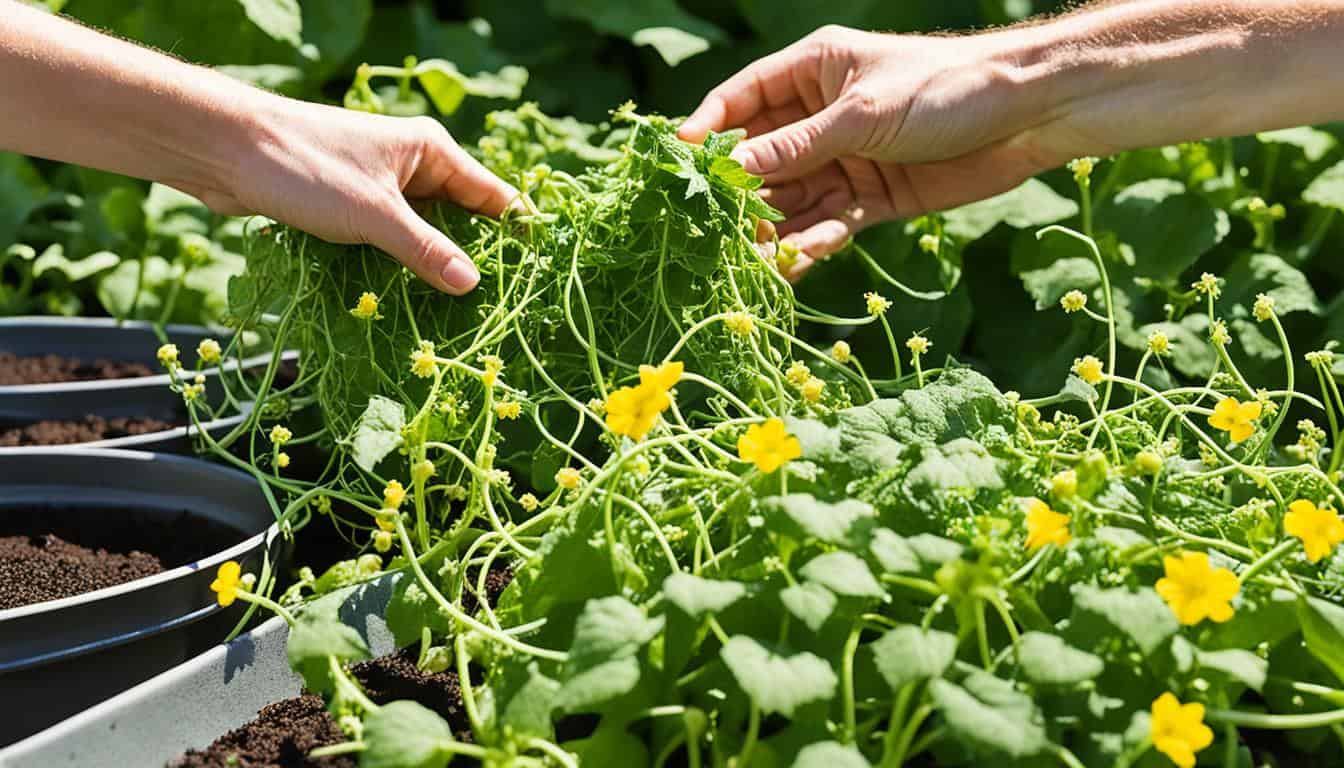
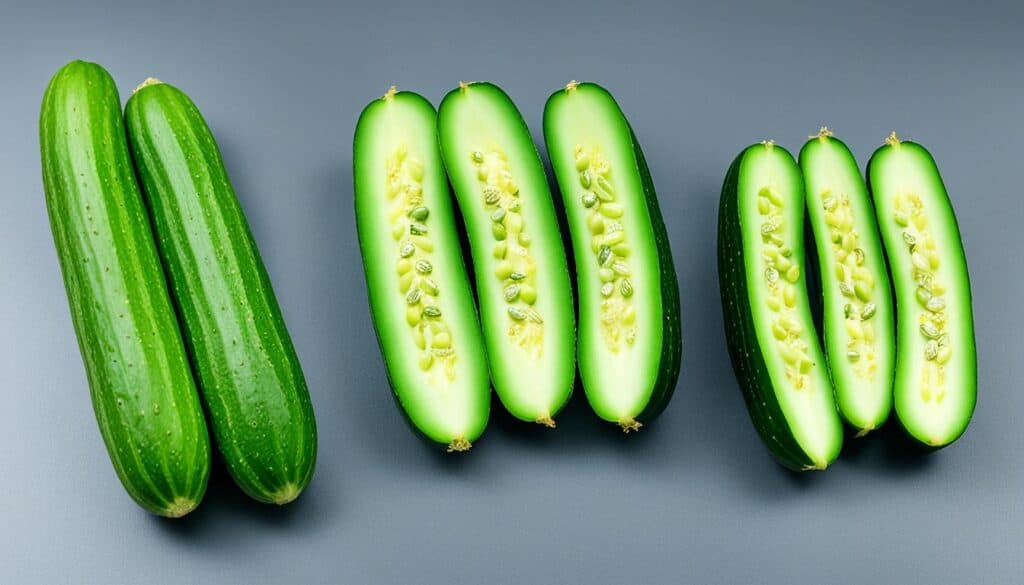

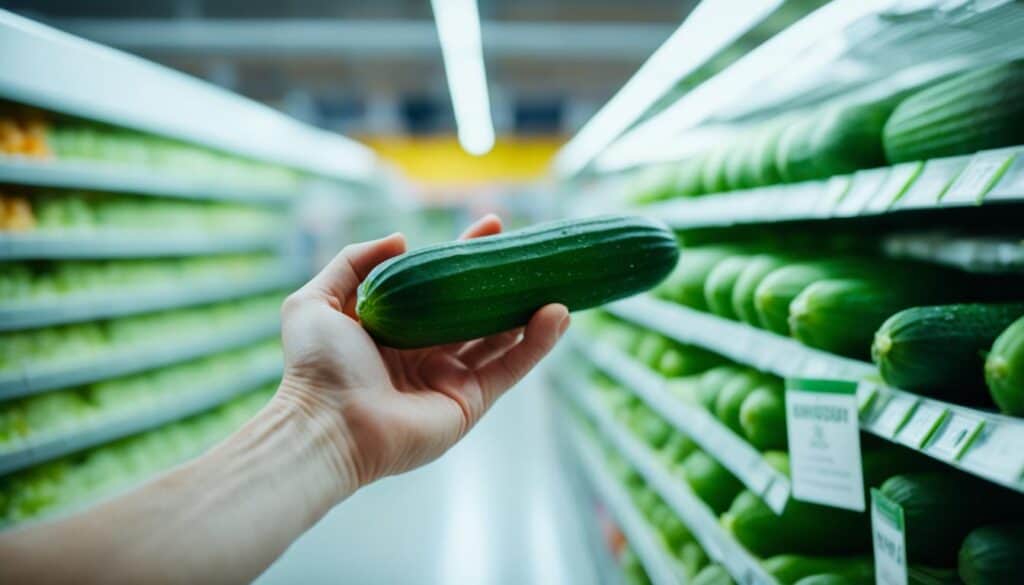
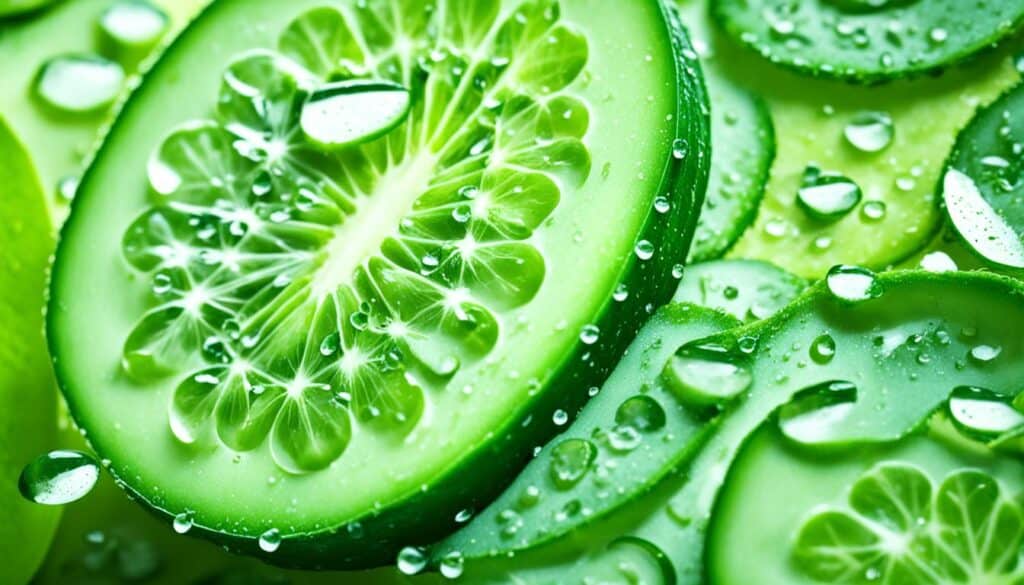
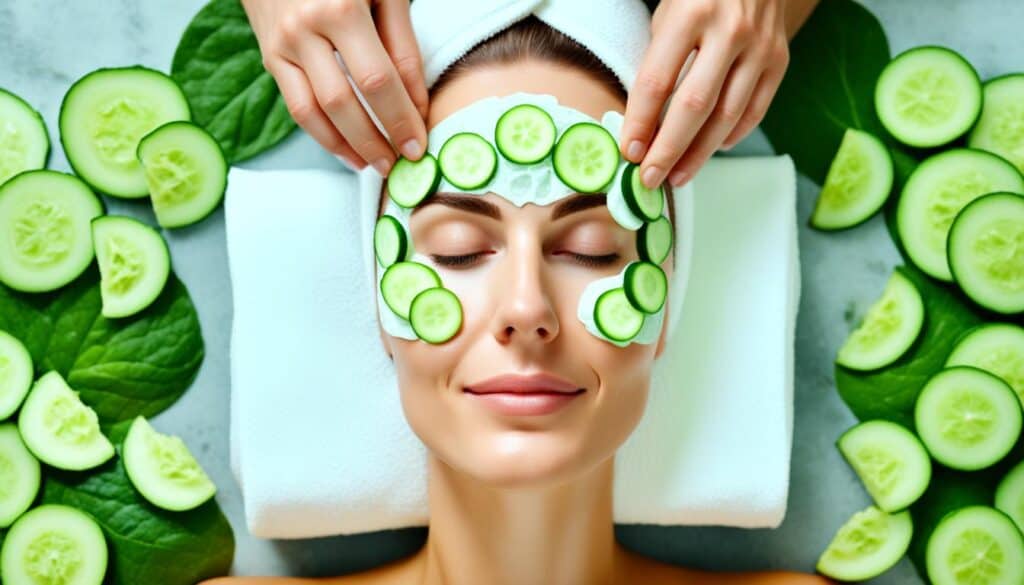



Leave a Reply